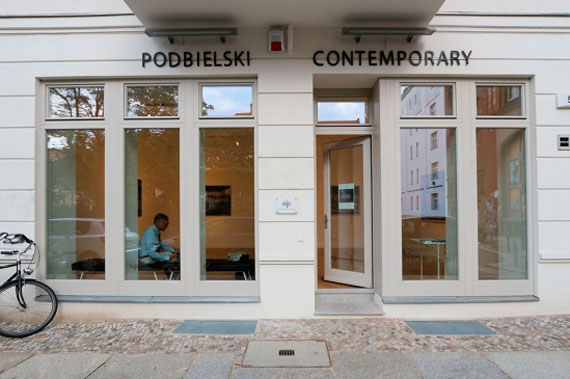"It may sound naive, but I think that for all its failings, the world of art and culture is still the only one where something like that can be done (...) The media can’t do it anymore; they’ve become a vulgar business like any other. The world of culture - museums and universities - is the last place where you are still free to dream of a better world (...)."
(Alfredo Jaar, Conversations in Chile 2005 Mistral, Santiago, ACTAR, Barcelona 2006, p. 80.)
Pierre Andre Podbielski established Podbielski Contemporary in January 2011 in the heart of Berlin, Mitte.
The emphasis of Podbielski Contemporary’s program is to represent a wide range of artists who narrate the geopolitics of the Balkans, the Middle East, Italy and Germany through transcultural perspectives.
In the last four years since its inception, Podbielski Contemporary has held 5 exhibitions per year and attended a number of international art fairs, including Rome Road to Contemporary, London Art 13, Artissima 2013/2014, MIA Fair Milan 2011-2014 and MIA Singapore 2014. Its main focus is to document geopolitical issues seen from an artistic perspective. The opening show "Moving Worlds" featured Yael Bartana, Adrian Paci, Paola Yacoub, Lidwien van de Ven and Danica Dakic and was introduced by an essay by Griselda Pollock; it was a strong declaration of intent.
Podbielski Contemporary seeks to promote, besides exhibitions, catalogues designed and published for each show and to address its work to international private and museum collections. Its founder strongly believes that a gallery, besides representing artists and promoting their works in the optimal way, should serve as a platform for the exchange of ideas about art and culture.
Podbielski Contemporary aims to merge art dealing activities with academic research, presenting special events such as artists talks, performances, conferences and screening evenings, to become not only a lively space for art lovers and art collectors, but also a cultural destination for young scholars and for the Berlin art community in general.
May its small-scale intervention help sustain wider efforts in overcoming the compartmentalization of the art field between public and private institutions.
�
(Alfredo Jaar, Conversations in Chile 2005 Mistral, Santiago, ACTAR, Barcelona 2006, p. 80.)
Pierre Andre Podbielski established Podbielski Contemporary in January 2011 in the heart of Berlin, Mitte.
The emphasis of Podbielski Contemporary’s program is to represent a wide range of artists who narrate the geopolitics of the Balkans, the Middle East, Italy and Germany through transcultural perspectives.
In the last four years since its inception, Podbielski Contemporary has held 5 exhibitions per year and attended a number of international art fairs, including Rome Road to Contemporary, London Art 13, Artissima 2013/2014, MIA Fair Milan 2011-2014 and MIA Singapore 2014. Its main focus is to document geopolitical issues seen from an artistic perspective. The opening show "Moving Worlds" featured Yael Bartana, Adrian Paci, Paola Yacoub, Lidwien van de Ven and Danica Dakic and was introduced by an essay by Griselda Pollock; it was a strong declaration of intent.
Podbielski Contemporary seeks to promote, besides exhibitions, catalogues designed and published for each show and to address its work to international private and museum collections. Its founder strongly believes that a gallery, besides representing artists and promoting their works in the optimal way, should serve as a platform for the exchange of ideas about art and culture.
Podbielski Contemporary aims to merge art dealing activities with academic research, presenting special events such as artists talks, performances, conferences and screening evenings, to become not only a lively space for art lovers and art collectors, but also a cultural destination for young scholars and for the Berlin art community in general.
May its small-scale intervention help sustain wider efforts in overcoming the compartmentalization of the art field between public and private institutions.
�

